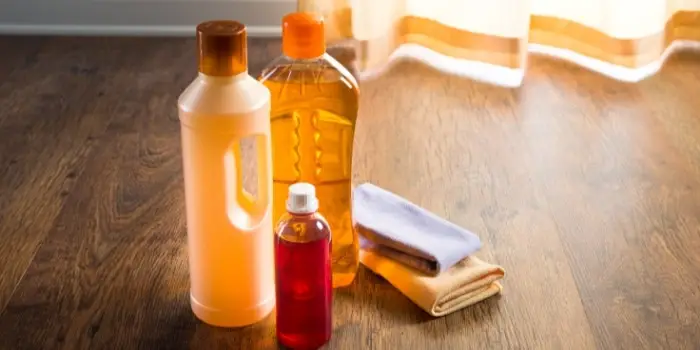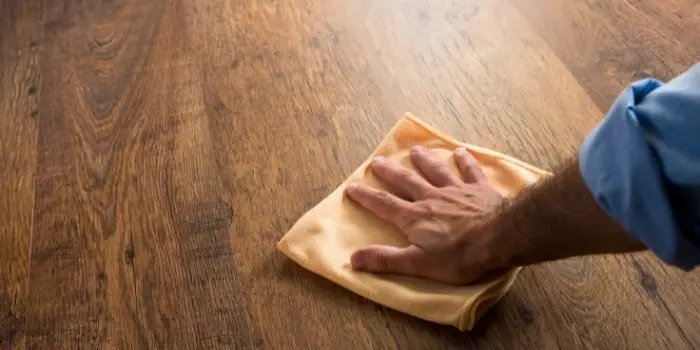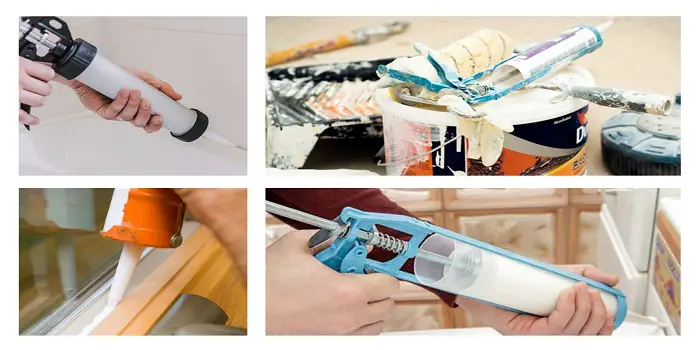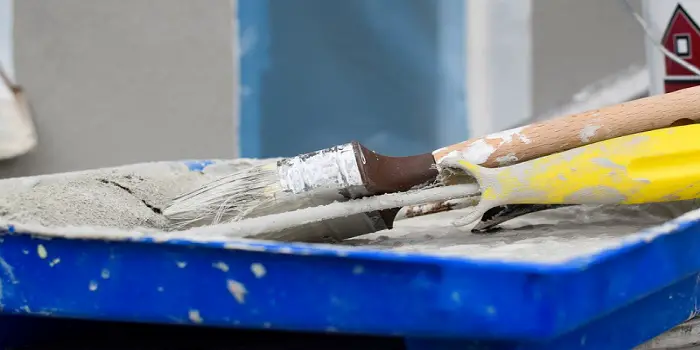
Urethane adhesive is a versatile structural adhesive known for its durability and elasticity. It is available in moisture and heat cure systems, making it adaptable to various bonding environments.
Derived from organic compounds, it can exhibit a rubbery, elastic texture or a hard, brittle finish, depending on the materials and manufacturing process used.
Since the adhesive has the potential to destroy your expensive floor and leave you to repair that as well, it’s good not to give it a chance to dry and cure on the surface – get it removed as soon as you can. However, removing urethane adhesive from hardwood floors will not only be frustrating, but it may also be pricey.
Below are a few ways you can take off the urethane adhesive from your hardwood floors before it becomes a serious problem.
What's Here in the Article:
1- Urethane Adhesive Remover
There are a number of high-quality adhesive removers (like MAPEI’s, Sentinel, and Proflex) explicitly designed for this task. These can easily lift the adhesive while managing any stains left behind.
The good thing is many of the best urethane adhesive removers don’t have any sort of odor and don’t need much to get the job done. There are even some that won’t leave behind any residue on the floor, making the process even simpler for you.
2- Mineral Spirits
Mineral spirits is a solvent that is quite inexpensive so it is widely available to people on most types of budgets.
It is a go-to choice for many professionals to remove urethane adhesive from a floor due to the ease with which it works on even the most stubborn urethane adhesive.
Since it is an organic solvent that works with the adhesive to loosen its bond it allows to easily lift the glue from the floor without getting the floor damaged. Just be sure to use it generously with a rag and dispose of the rag after use.
3- Methylene Chloride
This type of cleaner is quite potent and strong compared to other removers or cleaners. It is most commonly used in industries where working with adhesives is common.
You may also see it labeled as dichloromethane in stores and it works well on everything from tough stains to degreasing areas and can be used in any condition.
Since the chemical is transparent and has an odor, you should wear a mask, goggles, and gloves to protect yourself while using it on floors.
4- Acetone
Acetone is yet another organic solvent that is quite potent at removing glue residues. The organic formula is highly effective against urethane adhesive on hardwood floors, even when compared to powerful chemical solvents.
It is commonly used in industries, plants, and manufacturing buildings where degreasing and deep cleaning are frequently required.
You can also use it at home to remove urethane adhesive, but it is important not to mix it with any other cleaning products, as this can produce a toxic and dangerous effect.
5- Denatured Alcohol
The chemicals it contains make the alcohol quite strong and make it a common choice for anyone looking for an alternative to acetone.
It is safe to use solvent to remove urethane adhesive without the need for any protective clothing, even though it is as powerful as it is. You may also see it labeled as methylated spirits.
6- Goo Gone Pro-Power Spray
This is a powerful spray that is able to latch onto any tough urethane adhesive and pull it out with ease. Furthermore, it is quite inexpensive, so anyone on a budget can take advantage of it.
In terms of application and safety, this spray gel is simple to apply and use and is among the safest options available. It does leave a bit of residue behind on the floor, but it can easily be wiped away using any kind of hardwood floor cleaner.

Steps for Removing Urethane Adhesive from Hardwood Floors
Armed with an understanding of the different types of products, you can now choose one to use for the job.
Below, you’ll find a list of steps to take to clean urethane adhesive from floors.
Step 1. Collect the materials
Before starting, be sure you have all the materials you need on hand. This includes not only the solvent of your choice but also some of the tools and the following materials:
- Clean rags
- Mask, gloves, and goggles
- Hardwood floor cleaner
- Warm water
Step 2. Pour the solvent
Slowly pour and apply the solvent over the area where the adhesive has stained the floor. Cover all the areas where the adhesive needs to be removed.
However, be sure that you are not pouring too much of it. If you dump too much onto the hardwood floor, it will pool around and affect more than just the area of the urethane adhesive. You will also want to be sure you don’t spill it on anything else as it can cause damage.
Step 3. Allow the cleaner to sit
Once you have spread out the urethane adhesive remover, let it sit to dry for at least 15 or 20 minutes.
During this time, the urethane adhesive will weaken its bonds and start to break apart. It will begin to soften when this happens, so you can easily clean it up from the hardwood surface.
Step 4. Wipe away the adhesive
After the 15 or 20 minutes have passed take a clean rag and clean up the solvent, bringing the adhesive away with it.
The loosened particles will easily come loose from the floor, and soon you’ll be left with the clean hardwood floors you desire to get.
Step 5. Repeat the process using a putty knife
Depending on how much adhesive is there, you may need to repeat the process. Complete the steps all over again and allow it to soak, then wipe it once more.
Use a flat scraper or putty knife to ensure that every bit of it comes up this time. You can give certain stubborn spots more attention this way.
Step 6. Clean the surface
After you have cleared everything with the flat scraper, you’ll have to wipe it all down.
Grab another clean rag and soak it in some warm water. Once it is saturated, you can wipe the area gently to ensure nothing is left behind.
Step 7. Clean the hardwood floors
Use hardwood floor cleaners to get rid of any residue that might still be on the surface after your efforts. This will ensure that absolutely nothing is left even after using a rag and putty knife.
This final step is important if you want to ensure that the floor looks perfect and shows no sign of any spilled urethane adhesive.
Share the post "6 Tips to Remove Urethane Adhesive from Hardwood Floors"

Douglas Becker (aka Painter Doug) has over twenty years of experience as a painter in Adkins, Texas. At present, he resides in Florida with his family.
From painting multi-storeyed houses, condos, and apartments to large commercial buildings and small offices, he had served various customers in areas not only in Adkins but also in Southwest Florida, Sarasota, Naples, and many more. To know more about him check here.





